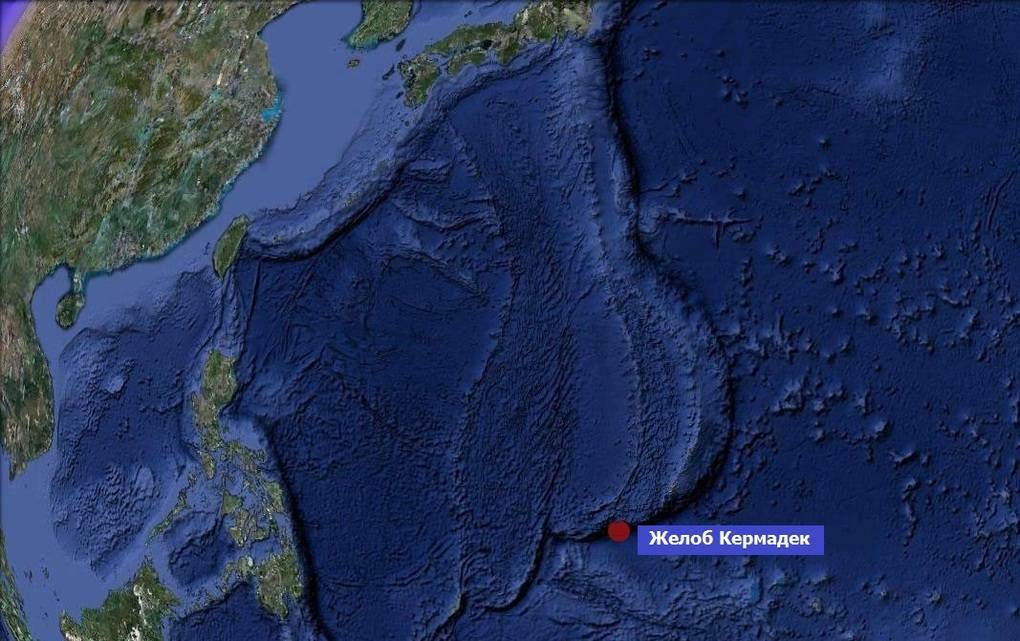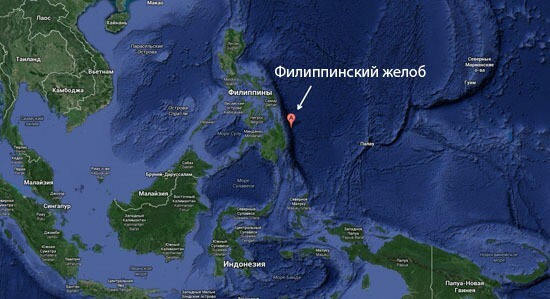We still know very little about our planet. This especially applies to the depths of the oceans and seas. But on land there are places that affect the human imagination. For example, the deepest places on Earth. What do we know about them and where are the lowest points of the earth's surface - about this further.
In everyday life, there are rarely large pits or cliffs, but our planet has a diverse landscape. Along with the highest mountain peaks also meets the deepest places of our planet - both of natural origin and created by human hands.
10
Lake Baikal 1 642 m

It will be a mistake to assume that the deepest places on Earth are found only in the oceans and seas. The Baikal has a depth of 1,642 meters and is the deepest among the lakes. Local residents are therefore more often called Baikal by sea. This depth is explained by the tectonic origin of the lake. This place is associated with many other records and amazing discoveries. Baikal can be called the largest natural reservoir of fresh water on Earth. This is the oldest lake on our planet( it is more than 25 million years old) and two-thirds of the flora and fauna of the reservoir is not found anywhere else.
9
Cave of Kruber-Voronya 2 196 m

There are giants among the caves. The deepest places on the Earth include the cave Krubera-Voronya( Abkhazia).Its depth is 2 196 meters. It should be noted that we are talking about the studied part of the cave. It is possible that the next expedition will descend even lower and set a new depth record. The karst cave consists of wells connected by crossings and galleries. It was first discovered in 1960.Then the speleologists were able to descend to a depth of 95 meters. The two-kilometer line was overcome by the Ukrainian expedition of speleologists in 2004.
8
TauTone Mine 4 000 m

Tau Tona( TauTona Mine) in South Africa is the deepest mine on Earth. It is located in the South African Republic, not far from Johannesburg. This greatest gold mine in the world goes to the earth for 4 kilometers. At this incredible depth is located a whole underground city with a network of kilometer tunnels. To get to their workplace, miners have to spend about an hour. Work at such a depth is associated with a large number of hazards - this is the humidity that reaches 100% in some branches of the mine, high air temperature, the danger of an explosion from gas leaking into the tunnel and collapse from earthquakes that occur here quite often. But all the dangers of work and the costs of maintaining the functionality of the mine are generously paid off by the gold mined - in the history of the mine's existence, 1,200 tons of precious metal were mined here.
7
Kola well 12 262 m

The deepest well on Earth is the Kola superdeep well, which is located on the territory of Russia. This is one of the most unusual and interesting experiments, set by Soviet scientists. Drilling began in 1970 and had only one task - to learn more about the Earth's crust. The Kola Peninsula was chosen to conduct the experiment because the ancient Earth's rocks of about 3 million years old come to the surface. They also represented a huge interest for scientists. The depth of the well is 12,262 meters. She allowed to make unexpected discoveries and forced to reconsider scientific ideas about the occurrence of rocks of the Earth. Unfortunately, the well created for a purely scientific purpose did not find use in the following years, and a decision was made to preserve it.
Further on the list of the deepest places of our planet will be present real giants - underwater troughs.
6
Izu-Boninskaya depression 9 810 m

In 1873-76, the American oceanographic vessel "Tuscarora" carried out surveys of the seabed for laying the submarine cable. The lot, thrown from the Japanese islands of Izu, recorded a depth of 8,500 meters. Later, the Soviet ship Vityaz in 1955 established the maximum depth of the depression - 9810 meters.
5
Kuril-Kamchatka Trench 10 542 m

The Kuril-Kamchatka Trench is not only one of the deepest places on Earth, the hollow is also the narrowest in the Pacific Ocean. The width of the gutter is 59 meters, and the maximum depth is 10 542 meters. There is a depression in the northwestern part of the Pacific Ocean. In the middle of the last century, it was studied by Soviet scientists on the Vityaz ship. No more thorough research was conducted. The trough was opened by the American vessel Tuscarora and for a long time carried this name until it was renamed.
4
Kermadec Gutter 10,047 m

Located in the Pacific Ocean off the islands of Kermadec. The maximum depth of the cavity is 10 047 meters. It was investigated by the Soviet vessel Vityaz. In 2008, at a depth of 7 kilometers, a previously unknown species of sea slugs from the family of snail fish was discovered in the Kermadec Trench. Surprising researchers and other monasteries of this deepest place on Earth are huge 30-cm crustaceans.
3
Philippine trench 10 540 m

The Philippine trench opens the three deepest points of the planet.10 540 meters - this is its depth. It was formed millions of years ago as a result of a collision of earth plates. Located in the east of the Philippine archipelago. By the way, scientists for a long time believed that the Philippine hollow is the deepest point of the Pacific Ocean.
2
Tonga Trough 10 882 m

Located in the south-western Pacific Ocean, near the islands of Tonga. This area is extremely interesting because it is a very active seismic zone. There are several strong earthquakes every year. The depth of the gutter is 10 882 meters. It is only 100 meters less than the Mariana Trench. The difference is about a percent, but it puts Tong's trough in second place on the list of the deepest places on Earth.
1
Mariana Trench 10,994 m

It is located in the western part of the Pacific Ocean and resembles a crescent in shape. The length of the gutter is more than 2,5 thousand kilometers, and the deepest point is 10,994 meters. It is called the Challenger Abyss.
The deepest place on Earth was discovered in 1875 by the English vessel Challenger. For today, the depression is the most studied of all the other deep-water gutters. To reach its bottom tried during the four dives: in 1960, 1995, 2009 and 2012.The last time in the Mariana Trench, the director James Cameron descended completely. Most of the bottom of the gutter reminded him of a lifeless moon surface. But, unlike the satellite of the Earth, the Mariana Trench is inhabited by living organisms. The researchers found here toxic amoebae, mollusks and deep-sea fish, which look very intimidating. Since a full-scale study of the gutter, except for short-term dives, was not carried out, the Mariana Trench can hide many more interesting things.
